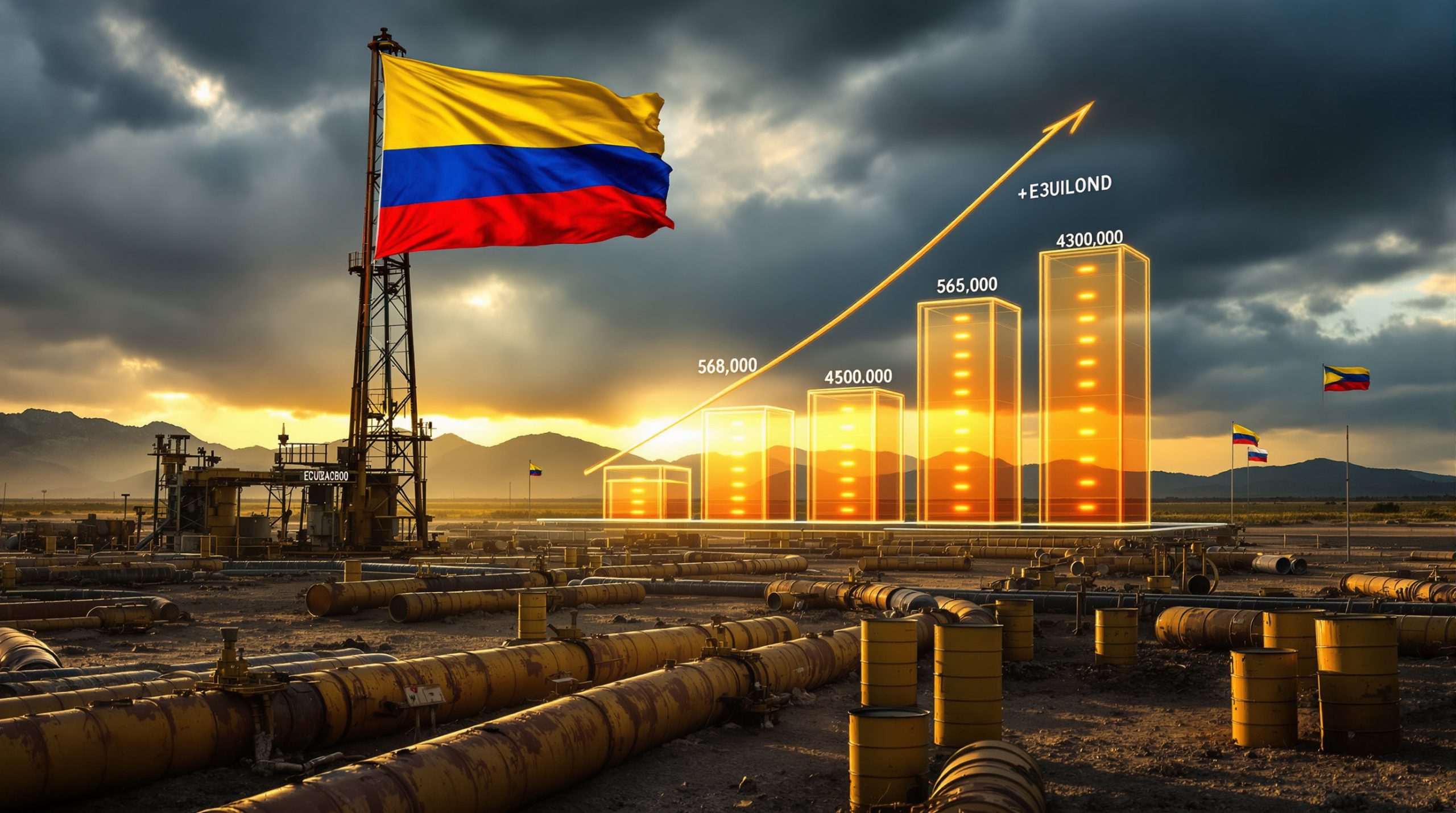Understanding the Forces Behind Sandvik Mining Equipment Demand
The global mining equipment sector is experiencing an unprecedented surge in demand, with Swedish industrial giant Sandvik positioned at the epicenter of this transformation. Multiple converging market forces have created optimal conditions for Sandvik mining equipment demand, fundamentally altering how operators approach capacity expansion and operational efficiency strategies.
Current market dynamics reflect a perfect storm of elevated commodity prices, technological advancement requirements, and operational efficiency imperatives. Mining companies worldwide are capitalising on favourable pricing conditions by investing heavily in production capacity, creating ripple effects throughout the entire equipment supply chain.
Commodity Price Catalysts Driving Investment Decisions
Recent commodity market performance has reached extraordinary levels, with gold prices analysis revealing gold surpassing the $4,000 per ounce milestone in October 2025, representing a significant increase from previous forecasts. This dramatic price appreciation has created compelling economic incentives for mining operators to expand production capabilities and optimise existing operations.
The copper market has similarly experienced robust demand driven by supply deficit concerns and infrastructure development requirements. Furthermore, copper price prediction models indicate continued strength due to expanding industrial applications, particularly in renewable energy technologies and advanced manufacturing processes.
Key Commodity Performance Impact on Equipment Demand:
- Gold: Record-breaking price levels above $4,000/oz driving underground equipment procurement surge
- Copper: Supply constraints creating urgency for new mine development projects
- Silver: Industrial demand spike focusing investment on automation equipment solutions
"Mining operators are strategically timing their equipment investments to maximise returns during this exceptional commodity price environment, fundamentally reshaping procurement patterns across the industry."
Sandvik's Strategic Market Positioning and Performance
Sandvik has strategically concentrated approximately 60% of its mining division's commodity exposure in gold and copper markets, positioning the company to benefit directly from current price dynamics. This focused approach enables the manufacturer to align product development initiatives and capacity planning with the most lucrative mining segments.
The company's third-quarter performance demonstrated remarkable order strength, with organic growth reaching 16% for the July-September period. This growth momentum occurred despite broader market challenges, including currency headwinds and trade policy complexities that have affected many international manufacturers.
Financial Performance and Market Response
Sandvik's financial results reflect both the opportunities and challenges present in today's Sandvik mining equipment demand environment. The company reported operating profit before amortisation of 5.54 billion Swedish crowns ($588.39 million) for the third quarter, representing a 6% decline from the previous year despite strong order growth.
Key Performance Indicators:
- Order Growth: 16% organic increase in mining equipment segment
- Stock Performance: Shares gained 2.6% on earnings announcement, up nearly 40% year-to-date
- Market Position: Company serves as industrial demand indicator due to broad customer base and short lead times
The performance shortfall versus analyst expectations of 5.77 billion crowns was primarily attributed to currency effects rather than operational issues. According to Sandvik's quarterly report, RBC analysts characterised the results as "very robust numbers."
Capacity Management and Operational Readiness
CEO Stefan Widing confirmed that Sandvik currently maintains sufficient production capacity to meet increased equipment demand, demonstrating operational preparedness for the market upturn. This capacity positioning allows the company to capitalise on growing demand without significant delays or bottlenecks that might otherwise constrain growth.
The company has also implemented tariff surcharge mechanisms to mitigate trade policy impacts, a strategy that proved successful in previous quarters. However, negative currency effects continued to pressure earnings margins, highlighting the complex international market dynamics affecting equipment manufacturers.
Technological Innovation Reshaping Equipment Demand
The industry evolution trends show mining's digital transformation is creating entirely new categories of equipment demand, with operators seeking solutions that combine traditional mechanical reliability with cutting-edge technological capabilities. This evolution extends beyond simple automation to encompass comprehensive operational optimisation systems.
Advanced Equipment Categories Experiencing Growth:
- Autonomous haulage systems designed for large-scale mining operations requiring minimal human intervention
- IoT-enabled monitoring equipment providing real-time operational data and predictive maintenance capabilities
- AI-powered processing systems optimising ore extraction and processing efficiency
- Remote-controlled drilling platforms enabling operations in hazardous or previously inaccessible environments
Efficiency-Driven Investment Philosophy
Mining companies are increasingly evaluating equipment purchases through operational efficiency metrics rather than simple capacity expansion considerations. This philosophical shift creates opportunities for premium equipment manufacturers to differentiate through technological innovation and comprehensive service offerings.
The integration of AI in mining technology represents a significant departure from traditional mechanical-focused approaches. These technologies enable predictive maintenance scheduling, optimised resource extraction patterns, and enhanced safety protocols that substantially improve overall operational performance.
"Industry projections suggest that automated mining equipment integration could improve operational efficiency by up to 30% through advanced data analytics and machine learning applications, creating compelling return-on-investment scenarios for equipment purchasers."
Global Mining Equipment Demand Patterns
Geographic demand patterns for mining equipment vary significantly based on local commodity focuses, regulatory environments, and infrastructure development priorities. Understanding these regional dynamics is crucial for equipment manufacturers developing market strategies and capacity allocation plans.
Regional Market Characteristics and Growth Drivers
Asia-Pacific Region: Infrastructure development programmes are driving substantial copper and iron ore extraction expansion, creating sustained demand for large-scale processing and transportation equipment.
North American Markets: The gold mining renaissance, combined with copper supply security concerns, has generated significant equipment procurement activity. The United States market represents 14% of Sandvik's total revenues, indicating substantial regional importance.
African Mining Development: Large-scale gold and copper project developments across multiple countries are creating equipment demand for both new installations and operational upgrades.
South American Expansion: Lithium extraction growth for battery applications, combined with traditional copper mining expansion, is generating diverse equipment requirements.
Australian Market Dynamics: Diversified commodity production expansion across multiple minerals is creating broad-based equipment demand patterns.
International Trade and Currency Considerations
International equipment manufacturers face increasingly complex market dynamics that extend beyond traditional supply and demand fundamentals. Currency fluctuations significantly impact pricing strategies and profit margins, as demonstrated by Sandvik's recent quarterly performance.
Critical Market Factors:
- Currency fluctuation impacts affecting pricing competitiveness and margin realisation
- Trade policy effects requiring active mitigation strategies through surcharge mechanisms
- Local content requirements influencing manufacturing location decisions and supply chain structures
The implementation of tariff surcharges has become a standard practice for international equipment manufacturers, allowing companies to maintain pricing consistency while adapting to changing trade policy environments.
Mining Company Equipment Investment Strategies
Current market conditions have prompted mining companies to adopt sophisticated approaches to equipment procurement, balancing immediate production requirements with long-term strategic positioning objectives. High commodity prices have created strong incentives for operational expansion and equipment utilisation optimisation.
Investment Priority Framework
Production Bottleneck Resolution: Mining companies prioritise equipment addressing immediate capacity constraints that limit production output. These investments typically generate the fastest return on investment through direct production increases.
Safety and Compliance Upgrades: Regulatory evolution requires continuous equipment updates to meet changing safety and environmental standards. These investments, while not directly revenue-generating, are essential for operational continuity.
Efficiency Optimisation Systems: Equipment reducing operational costs per unit produced receives high priority consideration, particularly during periods of elevated commodity prices when efficiency gains translate directly to profit improvements.
Future-Proofing Investments: Mining companies increasingly evaluate equipment based on long-term operational flexibility and adaptability to changing market conditions or regulatory requirements.
Procurement and Financing Evolution
Modern mining equipment procurement has evolved beyond traditional purchase models to encompass diverse financing and partnership arrangements. These approaches enable mining companies to optimise capital allocation while maintaining operational flexibility.
Current market conditions have influenced equipment acquisition approaches through extended financing terms for major purchases, lease-to-own arrangements for specialised machinery, technology partnerships combining equipment with comprehensive service agreements, and modular procurement strategies allowing phased capacity expansion as market conditions evolve.
Equipment Manufacturing Challenges and Market Dynamics
The surge in Sandvik mining equipment demand has created operational challenges for manufacturers throughout the industry, requiring strategic responses to maintain market position while meeting customer requirements. These challenges extend beyond simple production scaling to encompass supply chain management, quality control, and competitive positioning.
Production and Profitability Pressures
Despite experiencing robust order growth, Sandvik's third-quarter operating profit declined 6% year-over-year, illustrating the complex relationship between demand increases and profitability maintenance. The company's performance missed analyst expectations by approximately 4%, with results totalling 5.54 billion crowns against forecasted 5.77 billion.
Manufacturing Challenge Categories:
- Component supply chain pressures affecting production timeline consistency and cost management
- Skilled labour availability for specialised equipment assembly requiring technical expertise
- Raw material cost fluctuations impacting pricing strategies and margin predictability
- Quality control maintenance during rapid production scaling to meet demand increases
Currency and Trade Policy Navigation
International equipment manufacturers must actively manage currency exposure and trade policy impacts that can significantly affect profitability. Negative currency effects represented a material challenge to Sandvik's earnings margins in the third quarter, partially offsetting strong operational performance from order growth.
The company's successful implementation of tariff surcharge mechanisms demonstrates the importance of proactive trade policy management. These strategies enable manufacturers to maintain competitive positioning while adapting to evolving international trade environments.
Future Market Trajectory and Growth Projections
Industry analysis projects continued strength in mining equipment demand driven by fundamental shifts in global commodity consumption and production patterns. The convergence of energy transition minerals requirements, infrastructure development needs, and technology replacement cycles creates a multi-layered foundation for sustained market growth.
Long-Term Growth Catalysts
Energy Transition Metal Requirements: The global shift toward renewable energy and electric vehicle adoption is creating unprecedented demand for lithium, cobalt, rare earth elements, and other specialised minerals requiring dedicated extraction and processing equipment.
Infrastructure Development Programmes: Emerging market infrastructure expansion continues generating substantial demand for copper, iron ore, and construction materials, supporting sustained mining equipment requirements.
Technology Replacement Cycles: Ageing equipment fleets across global mining operations require systematic replacement and upgrading, creating predictable demand patterns for equipment manufacturers.
Environmental Compliance Evolution: Increasingly stringent environmental regulations necessitate equipment upgrades incorporating advanced emission control, energy efficiency, and environmental monitoring capabilities.
Innovation Priorities and Market Evolution
Equipment manufacturers are investing substantially in research and development initiatives addressing evolving industry requirements. According to Sandvik's official website, these investments focus on carbon footprint reduction technologies, enhanced safety systems incorporating AI-powered risk assessment capabilities, modular design approaches providing operational flexibility, and predictive maintenance integration reducing unplanned downtime.
"Market analysis suggests the global mining equipment sector will continue expanding through 2030, with automation and digitalisation representing the fastest-growing segments as operators prioritise efficiency and safety improvements."
Investment Analysis and Evaluation Metrics
Investors evaluating mining equipment manufacturers should focus on performance indicators reflecting both current market position and future positioning within evolving industry conditions. Sandvik's recent performance provides valuable insights into key evaluation criteria and market dynamics.
Performance Indicators and Market Signals
The company's 40% year-to-date stock appreciation through October 2024, combined with the 2.6% gain following earnings announcement, demonstrates market confidence in Sandvik mining equipment demand sustainability. However, the 6% profit decline despite 16% order growth highlights the importance of operational efficiency evaluation.
Critical Evaluation Metrics:
- Order backlog strength providing revenue visibility and geographic diversification assessment
- Operational efficiency indicators measuring the company's ability to convert demand into profitable growth
- Market share trends within high-growth commodity segments demonstrating competitive positioning
- Technology investment levels indicating preparation for industry evolution and future competitiveness
Risk Assessment and Market Considerations
RBC analysts' characterisation of Sandvik's results as "very robust" despite modest shortfalls versus expectations illustrates the importance of distinguishing between operational performance and external factors. The analysts attributed revenue and earnings gaps primarily to currency effects rather than fundamental business issues.
Investment Risk Factors:
- Commodity price volatility affecting customer investment capacity and equipment demand sustainability
- Currency exposure demonstrating material impact on profitability and requiring active management
- Trade policy sensitivity necessitating adaptive strategies and potentially affecting market access
- Cyclical market exposure through concentrated commodity focus creating both opportunity and risk
Sandvik's position as an industrial demand indicator, due to its broad customer base and short order lead times, provides investors with valuable insights into broader economic trends and industrial activity levels.
Strategic Implications and Market Outlook
The current surge in Sandvik mining equipment demand represents more than a cyclical upturn, reflecting fundamental changes in how the global mining industry approaches production efficiency, technological integration, and operational optimisation. Companies successfully aligning their capabilities with these evolving market dynamics are positioned to benefit from sustained growth opportunities extending well beyond traditional market cycles.
The convergence of record commodity prices, technological advancement requirements, and operational efficiency imperatives has created an environment where equipment manufacturers can achieve both volume growth and premium market positioning. However, success requires continuous adaptation to changing customer requirements and competitive pressures, as demonstrated by Sandvik's mixed quarterly results showing strong orders alongside margin pressures.
As the mining industry continues its evolution toward greater automation, sustainability focus, and operational efficiency, equipment demand patterns will likely become increasingly sophisticated and technologically driven. Manufacturers investing in innovation while maintaining operational excellence are best positioned to capitalise on these long-term growth trends and market transformation dynamics.
The relationship between commodity prices, equipment demand, and manufacturer performance will remain complex, requiring investors and industry participants to evaluate multiple factors including technological capability, operational efficiency, geographic diversification, and adaptability to changing market conditions. Understanding these dynamics is essential for navigating the evolving mining equipment landscape and identifying sustainable growth opportunities.
Ready to Capitalise on Mining Equipment Investment Opportunities?
Discovery Alert's proprietary Discovery IQ model delivers real-time alerts on significant ASX mineral discoveries, instantly empowering subscribers to identify actionable opportunities ahead of the broader market. Understand why major mineral discoveries can lead to substantial market returns by exploring Discovery Alert's dedicated discoveries page, and begin your 30-day free trial today to position yourself ahead of the market.




